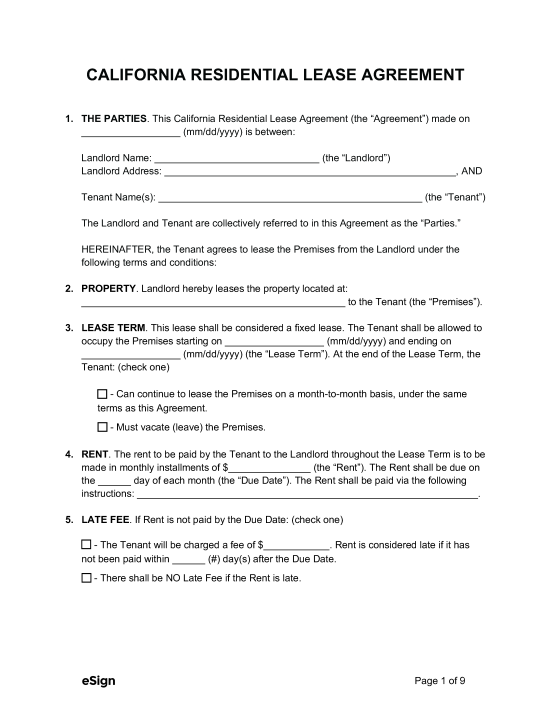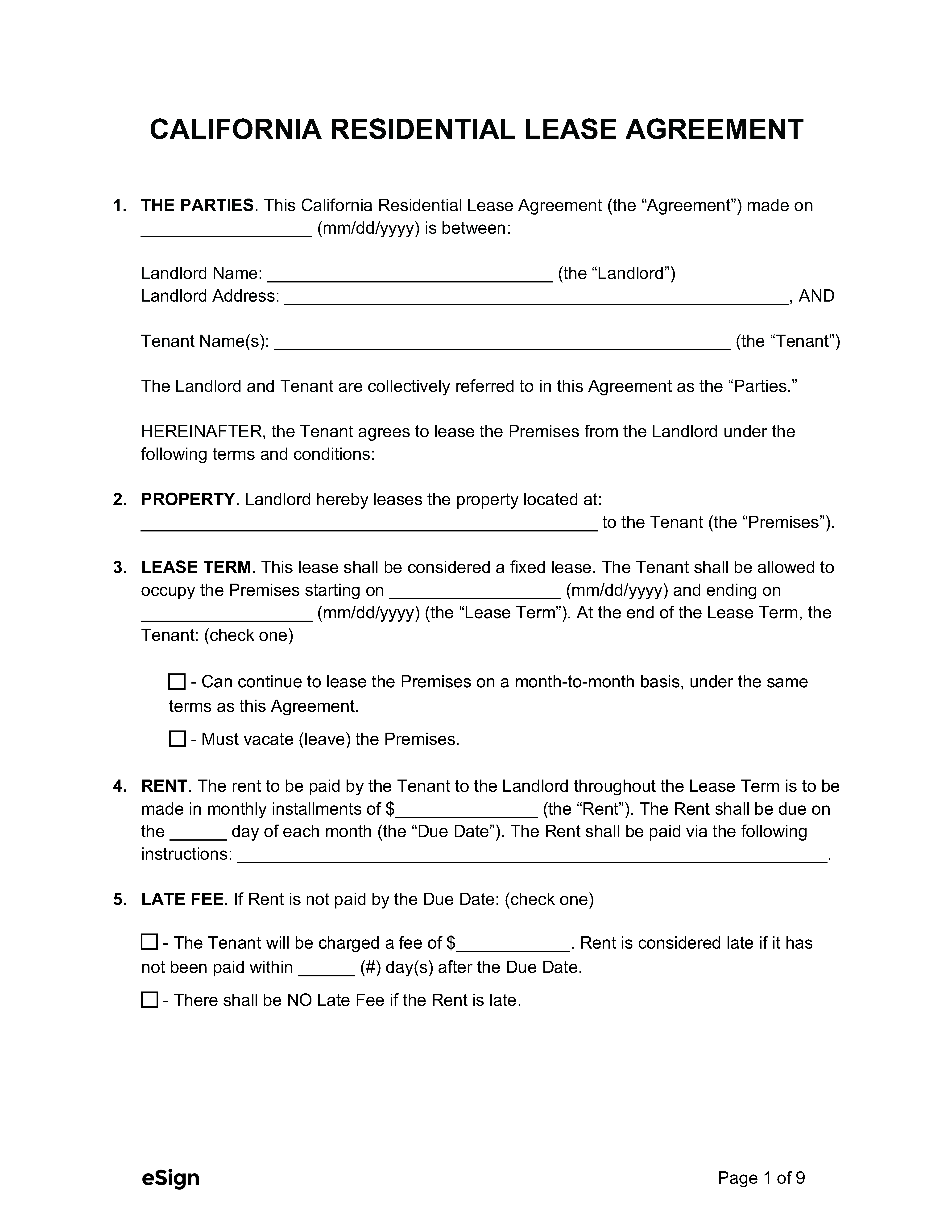California Standard Residential Lease Agreement
The California standard residential lease agreement is a document that landlords use to define the terms and conditions for leasing residential property to a tenant. This type of rental contract is for a fixed tenancy term but can be renewed by the parties after the initial period ends.
California Standard Residential Lease Agreement
The California standard residential lease agreement is a document that landlords use to define the terms and conditions for leasing residential property to a tenant. This type of rental contract is for a fixed tenancy term but can be renewed by the parties after the initial period ends.
PDF Download
Email Delivery
Last updated April 30th, 2024

The California standard residential lease agreement is a document that landlords use to define the terms and conditions for leasing residential property to a tenant. This type of rental contract is for a fixed tenancy term but can be renewed by the parties after the initial period ends.
4.7 | 124 Ratings
Downloads: 29,951

- Home »
- Lease Agreements »
- California »
- Residential
Rental Application – An application form gives landlords information about prospective tenants’ rental history and other pertinent information.
Required Disclosures (15)
- AB 1482 Just Cause Addendum (PDF) – This addendum is required if the property is not subject to the just cause and rent increase statutes. [1]
- Bed Bug Disclosure (PDF) – Tenants must receive a disclosure with bed bug information prior to entering into a lease. [2]
- Death on Premises – Tenants must be made aware of any deaths that took place on the property in the past three years. [3]
- Demolition – New and current tenants must be notified if the landlord has applied or will apply for a demolition permit. [4]
- Flood (PDF) – The lease must include whether the property is in a flood hazard area. [5]
- Just Cause – Unless the property meets the requirements of §§ 1947.12(d)(5) and 1946.2(e)(8) of the Civil Code, the landlord must provide tenants with a statement outlining the rent increase laws. [6]
- Lead-Based Paint Disclosure (PDF) – This lead paint disclosure must be provided to all tenants who rent property built prior to 1978. [7]
- Megan’s Law – Megan’s Law disclosure notifies tenants that they have a right to search the sex offenders website for offenders in their area. [8]
- Methamphetamine Contamination – If the property is subject to remediation due to meth contamination, a copy of the remediation order has to be delivered to any lease applicant. [9]
- Ordnance Locations – Tenants must be made aware if the property is in a neighborhood that was used as a federal or state ordnance location. [10]
- Pest Control – Any notices issued by pest control services hired by the landlord must be provided to tenants. [11]
- Shared Utilities – If a tenant’s rental property has shared utility metering, the landlord must disclose this information and enter into a payment agreement for these services. [12]
- Smoking Policy (PDF) – If smoking is not permitted in the tenant’s rental unit, the landlord must provide a list of other prohibited smoking areas on the property. [13]
- Toxic Mold (PDF) – Landlords must provide a disclosure to tenants if mold exists on the rental property. [14]
- Water Submeter Addendum (PDF) – If a tenant is charged a separate water bill at a property with submeters, the landlord must provide a written disclosure including all billing information. [15]
Security Deposit Laws
- Maximum Amount ($) – 2 months’ rent unfurnished. 3 months’ furnished. [16]
- Returning to Tenant – 21 days. [17]



